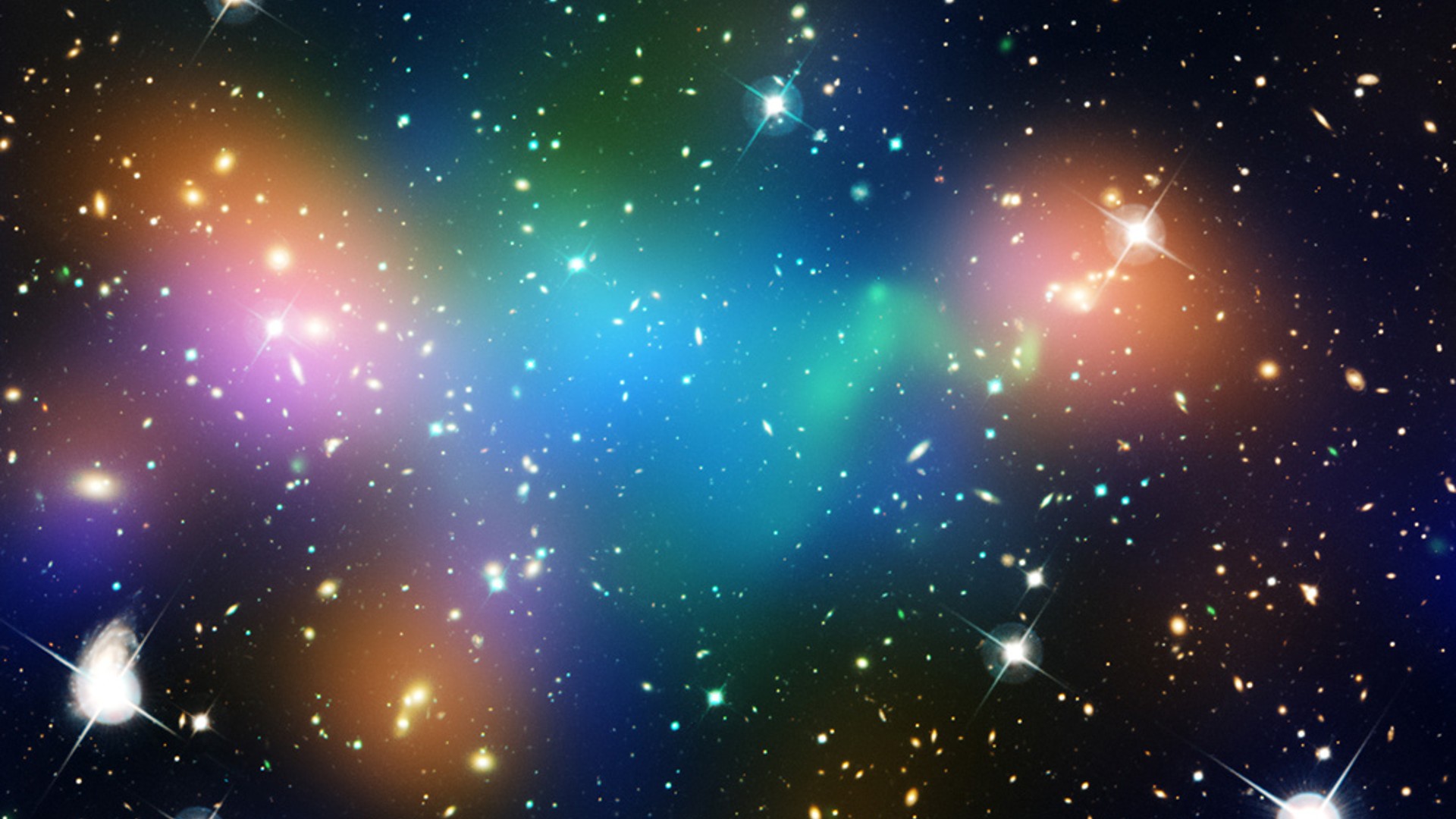How much of the universe is dark matter?
Most matter in the universe cannot be seen — but its influence on the largest structures in space can.

Astronomers estimate that roughly 85% of all the matter in the universe is dark matter, meaning only 15% of all matter is normal matter. Accounting for dark energy, the name astronomers give to the accelerated expansion of the universe, dark matter makes up roughly 27% of all the mass energy in the cosmos, according to CERN (the European Organization for Nuclear Research).
Astronomers have a variety of tools to measure the total amount of matter in the universe and compare that to the amount of "normal" (also called "baryonic") matter. The simplest technique is to compare two measurements.
The first measurement is the total amount of light emitted by a large structure, like a galaxy, which astronomers can use to infer that object's mass. The second measurement is the estimated amount of gravity needed to hold the large structure together. When astronomers compare these measurements on galaxies and clusters throughout the universe, they get the same result: There simply isn't enough normal, light-emitting matter to account for the amount of gravitational force needed to hold those objects together.
Thus, there must be some form of matter that is not emitting light: dark matter.
Related: What is dark matter?
Different galaxies have different proportions of dark matter to normal matter. Some galaxies contain almost no dark matter, while others are nearly devoid of normal matter. But measurement after measurement gives the same average result: Roughly 85% of the matter in the universe does not emit or interact with light.
Not enough baryons
There are many other ways astronomers can validate this result. For example, a massive object, like a galaxy cluster, will warp space-time around it so much that it will bend the path of any light passing through — an effect called gravitational lensing. Astronomers can then compare the amount of mass that we see from light-emitting objects to the mass needed to account for the lensing, again proving that extra mass must be lurking somewhere.
Breaking space news, the latest updates on rocket launches, skywatching events and more!
Astronomers can also use computer simulations to look at the growth of large structures. Billions of years ago, our universe was much smaller than it is today. It took time for stars and galaxies to evolve, and if the universe had to rely on only normal, visible matter, then we would not see any galaxies today. Instead, the growth of galaxies required dark matter "pools" for the normal matter to collect in, according to a lecture by cosmologist Joel Primack.
Lastly, cosmologists can look back to when the cosmos was only a dozen minutes old, when the first protons and neutrons formed. Cosmologists can use our understanding of nuclear physics to estimate how much hydrogen and helium were produced in that epoch.
These calculations accurately predict the ratio of hydrogen to helium in the present-day universe. They also predict an absolute limit to the amount of baryonic matter in the cosmos, and those numbers agree with observations of present-day galaxies and clusters, according to astrophysicist Ned Wright.
Alternatives to dark matter
Alternatively, dark matter may be a misunderstanding of our theories of gravity, which are based on Newton's laws and Einstein's general relativity.
Astronomers can tweak those theories to provide explanations of dark matter in individual contexts, like the motions of stars within galaxies. But alternatives to gravity have not been able to explain all the observations of dark matter throughout the universe.
All the evidence indicates that dark matter is some unknown kind of particle. It does not interact with light or with normal matter and makes itself known only through gravity. In fact, astronomers think there are trillions upon trillions of dark matter particles streaming through you right now. Scientists hope to nail down the identity of this mysterious component of the universe soon.
Originally published on LiveScience.

Paul M. Sutter is a cosmologist at Johns Hopkins University, host of Ask a Spaceman, and author of How to Die in Space.

